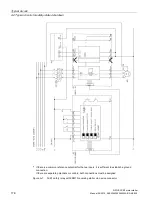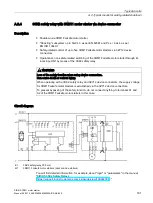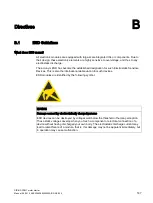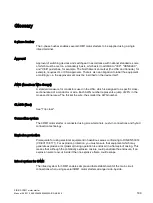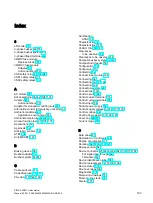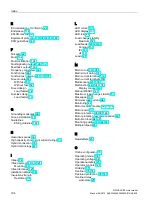
Glossary
SIRIUS 3RM1 motor starter
192
Manual, 06/2016, A5E0345285095020A/RS-AE/005
Trip class (CLASS)
The trip class of an inverse time-delay overload relay specifies the maximum tripping time
from cold at a particular load. The trip class number (e.g. CLASS 10A) represents the
maximum permissible tripping time in seconds when the 3RM1 motor starter is subjected to
a symmetrical 3-pole load from cold with 7.2 times the current setting (IEC 60947-4-1;
DIN VDE 0660 Part 107).
Tripping characteristic
The tripping characteristic (curve) is the graphical representation of the relationship between
the tripping time and the influencing variable. The time/current diagram can be used to find
out, for example, how long it will take for the release or the tripping relay to operate at a
particular current.
Tripping current (of an overload release)
The current value at which a release trips within a certain time.
Type of coordination 1
The load feeder may be non-operational after a short circuit has been cleared. Damage to
the 3RM1 motor starter is permissible.
Type of coordination 2
The 3RM1 motor starter remains functional after a short-circuit.
Types of coordination
The IEC 60947-4-1 (VDE 0660 Part 102) standard distinguishes between two types of
coordination (type of coordination) referred to as coordination type "1" and coordination type
"2". The short circuit that needs to be dealt with is cleared reliably and safely with both types
of coordination; the only differences are in the extent of the damage sustained by the device
following a short circuit.
Utilization category
According to IEC 60947-4-1, the application area of and the load applied to 3RM1 motor
starters can be identified by looking at the specified utilization category in conjunction with
the specified rated operational current or the motor power and the rated voltage. An example
is utilization category AC 53 a for starting and switching off squirrel-cage motors.

